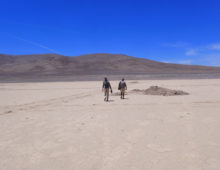Roles of Microbial Communities in the Atacama Desert
The hyperarid core of the Atacama Desert (Chile) is one of the driest deserts on Earth. Its soils represent one of the few environment types that yet have barely been investigated at the level of metagenomics. Due to the extremely low content of biomass these Atacama Desert sediments have been claimed to be Mars-like. We… [Read More]
